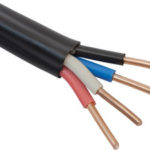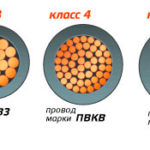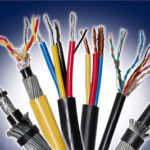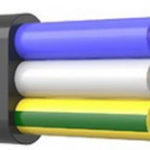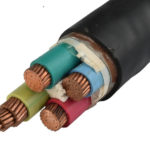A wide range of electrical products is presented on the shelves of stores. is no exception and power cable for electrical wiring. It is difficult for an untrained user to understand which cable to use for wiring in an apartment.
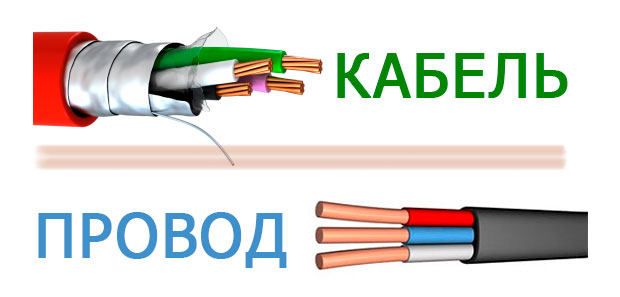
Content
Differences between cables and wires
Many people consider the above terms to be synonymous. Products can be distinguished by the manufacturer's markings. Basically, cable means the wire, covered with durable two-layer insulation, one of which covers the conductive cores, and the second covers the entire complex.
The wire is characterized by a lighter insulation, giving a weakened structure to this element. Sometimes it is double, but in an open form it is characterized by instability under conditions of aggressive influence.It is unstable to continuous loads and ignites easily. When deciding which wires are best to use for wiring in the house, it is most advisable to choose cables.
Distinguished by shape wires and cables round or flat, but this indicator determines the ease of use. The main classification unit is the specification.
Copper or aluminum
In Soviet times, aluminum was used for residential wiring, which was due to:
- reduced price when compared with copper wires for electrical wiring;
- lightweight construction.
At the same time, aluminum wires have more negative qualities than positive ones:
- reduced electrical conductivity;
- oxidation upon contact with air, due to which the resistance increases and the useful cross section decreases;
- service life does not exceed 20-25 years;
- increased fragility;
- the complexity of wiring.
Advantages of copper used in electrical wiring:
- good conductivity even after the formation of a film on the surface;
- service life - up to half a century;
- increased mechanical strength;
- installation is easy.
The only disadvantage of such wiring is the high cost. It is determined which cable is needed for wiring in building codes, according to which wiring in various buildings is made of copper cables and wires. Here are links to the PUE.
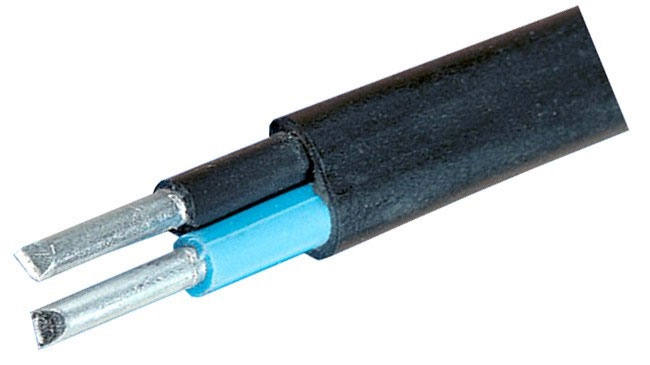
With a lack of funds, it is possible to perform a combined posting. The wire for sockets must be with copper conductors, and the cable for lighting must be with copper or aluminum.When using different-metal elements, you will have to purchase connecting blocks or special clamps that prevent direct metal contact, which causes aluminum to oxidize strongly. This increases the specific contact resistance, heating and promotes burning.
The most susceptible to overheating are electrical networks in flammable buildings with aluminum conductors, so you need to use copper wiring in a wooden house.
Solid or multi-wire cable
Both single-wire or monolithic and multi-wire conductors are used. It is determined which cable needed for wiring used equipment: stationary or portable.
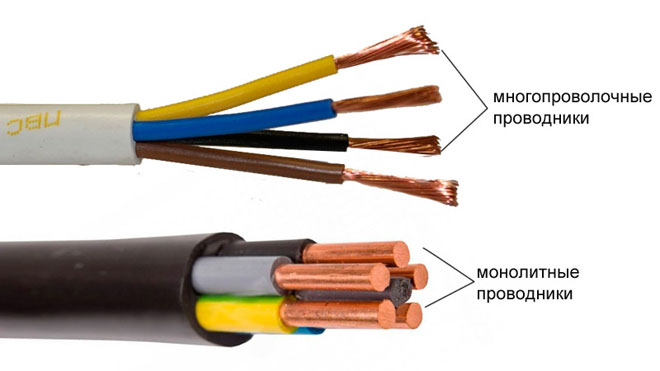
A single-wire cable has increased rigidity and is used for stationary wiring. In the multiwire there are several thin conductors that form the cross section of the core. When connecting them to the terminal blocks, they must be crimped or terminated. Similar elements are used in hard-to-reach places and connecting portable equipment.
It is possible to use both options for home wiring. The choice is made on the basis of ease of installation and operation. For concealed wiring, it is possible to use a single-core wire under plaster. For massive tight turns, it is better to use a stranded conductor with any wiring option. Today, a 3-core single-wire is used for electrical wiring in an apartment (single conductor) cable.
Single-conductor elements are also used to enter the apartment. Due to increased flammability, multi-wire cables are not used for residential wiring during stationary installation.
Cable cross section
The selection of wiring for a wooden house or apartment is made from existing ones with copper conductors, while the minimum cross section is 1.5 mm². It characterizes the throughput. For such elements, 1 mm² passes 8-10 A, and for aluminum - only 5 A. The calculation of electrical wiring lines in a private house or other building is carried out separately according to the load, after which the section is selected cables.
The table shows the cross-sections used for home wiring (VVGng-LS cable).
| Purpose | Cross section, mm² | Maximum power, kW | Recommended rating of the protective auto switch, A |
|---|---|---|---|
| Lighting | 3x1.5 | 4,1 | 10 |
| Sockets | 3x2.5 | 5,9 | 16 |
| For electric stove or hob | 3x6 | 10,1 | 32 |
Introductory wiring to the apartment is carried out with a cross section of 3x6 mm². Selected by power and current.
The buyer must understand that the cross section and diameter are different concepts. The first is the area of the circle, calculated as 0.785 squares of the diameter. This indicator is always rounded up when buying.
Popular brands for electrical wiring
GOST 31565 regulates the use of fire-resistant electrical wiring. It allows the following types of cables to be used for internal wiring:
- ng-ls - having a small gas and smoke emission;
- ng-HF - do not emit halogens during smoldering and products based on gases during combustion.
Type 1 includes a variety VVGng-LS, and ko 2 PPGng-HF.
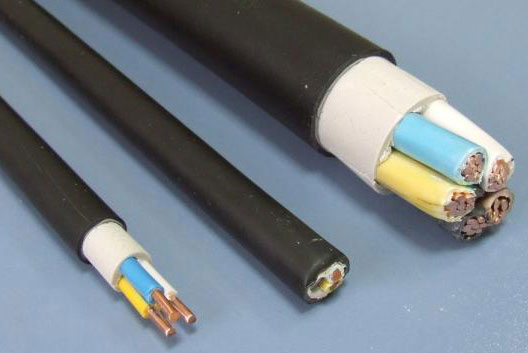
Below are non-flammable wiring cables of the VVG and NYM brands. The benefits of using them include:
- a large assortment;
- high fire safety;
- convenient installation;
- quality performance;
- high durability;
- low smoke and self-extinguishing.
VVG cable
For many experts, the question of how to choose a wire for laying in a residential area is not worth it. They use the VVG brand. Here single-core copper conductors are used. It has become widespread in buildings with normal or high humidity. The maximum allowable voltage is 660 V. There are 1-5 cores in 1 element, the cross section is 1.5-240 mm². The shape of the conductors is different: from triangular to flat.
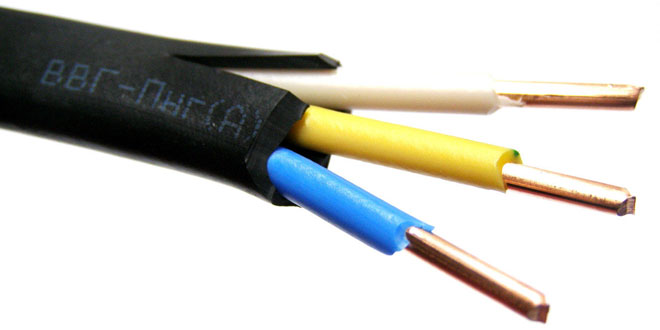
Several models are produced that differ in insulation parameters:
- VVG - with insulation and sheath made of vinyl;
- similar with the index "ng" - equipped with insulation with a self-extinguishing function;
- "ng" - a variety with the continuation -LS - a similar non-combustible insulation of cores with a small release of smoke by the shell;
- VVGng FR-LS - in addition to the advantages of the previous modification, it has additional fire protection in the form of mica tape.
All "ng" varieties are suitable for mounting in bundles (1 carrier). They are also used for electrical wiring in the country.
More about VVG power cable written in our article.
NYM cable
Was created in Germany. Issued in the Russian Federation. A copper conductor is used. It is better for adherents of European goods to use these cables for wiring in an apartment. It is similar in execution to VVGnm. It can be single-wire stranded, with a cross section of 1.5-10 mm², and stranded - from 16 mm². The composition includes a rubber filler that provides incombustibility and is located between the core insulation and the sheath. The cable for sockets is used with a cross section of 3x2.5, for switches - 3x1.5.

Learn more about NYM cable you can in our article.
What wires do not fit?
To carry out electrical wiring in the apartment not with a cable, but with a wire, even if it is stranded or double-insulated, is not a good idea. They ignite easily with prolonged use. The wires do not meet the requirements of the Electrical Installation Code for residential buildings. Therefore, if there is a choice and opportunity, then when asked which wire to use for wiring, you must answer that a cable is used.
PVC wire
Extension cords are made from it, household electrical appliances are connected to home wiring. The work is carried out up to 380 V, the number of conductors is 2, the cross-section of the stranded core is 0.75-10 mm². A copper conductor wrapped in vinyl materials is used.
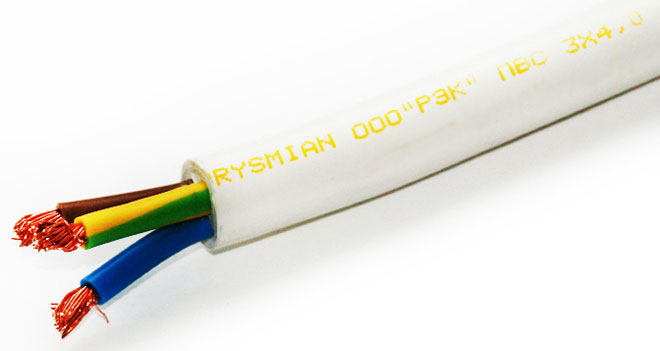
The wiring is of poor quality. The cost is low, but it is covered by the increased price of work:
- connecting ends must be tinned and soldered;
- has an increased risk of fire due to the stranded core;
- does not imply their presence in 1 device.
Wires and cords ShVVP, PVVP
Single and multi-wire copper conductors. Connect household appliances. There is no non-combustible insulation. Service life is short. Do not use for fixed wiring.
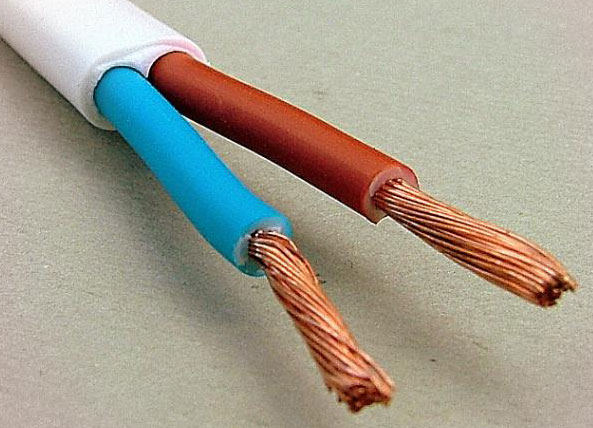
Wire PUNP
Due to unreliability, this wire has been banned from electrical wiring since 2007. It was allowed in the USSR. Today, due to the use of high-power equipment, it is not able to withstand increased loads. It has poor insulation.
Similar articles:
